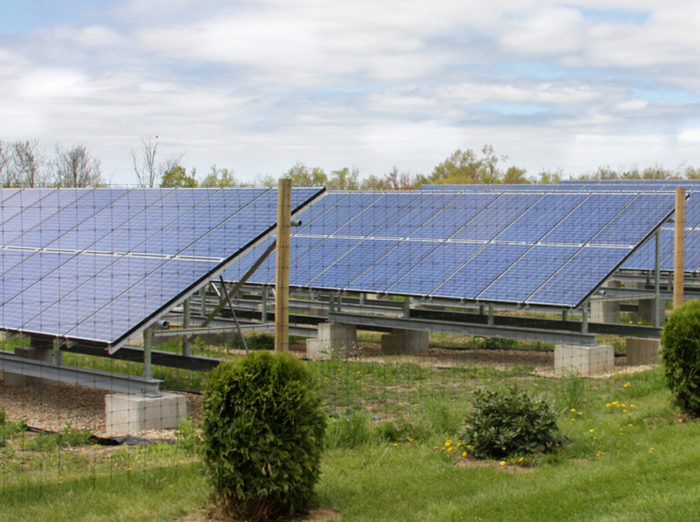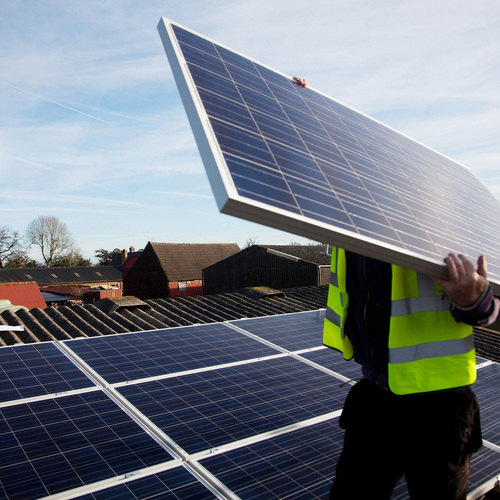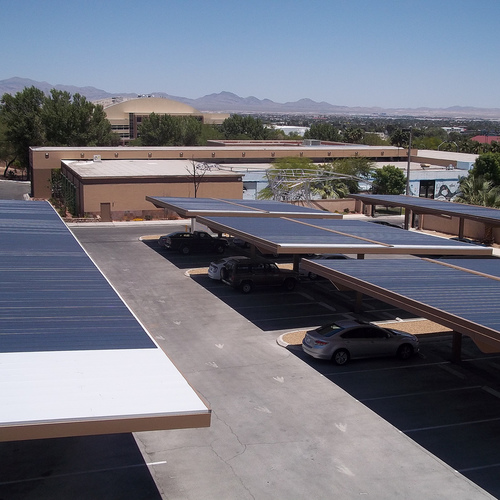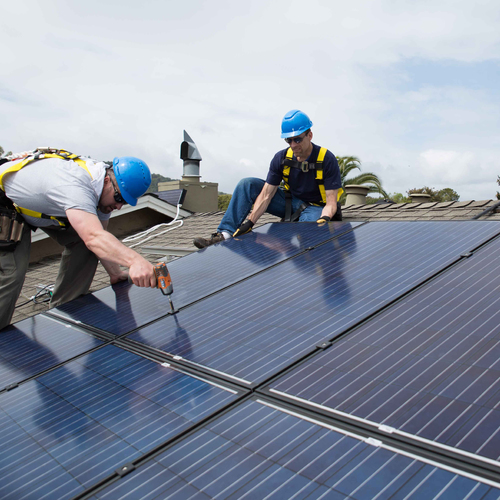
Image Credit: Liz West / CC / Flickr
Incentives that have played a major role in the rapid increase of photovoltaic (PV) installations in Massachusetts are nearing their limits, cutting the financial return on solar projects while state legislators contemplate their next move, The Boston Globe reports.
One of the subsidies, solar renewable energy certificates, hit the cap of 1,600 megawatts of PV through a combination of installed projects plus those in the planning stage. Utilities buy renewable energy certificates, called RECs, to help them meet renewable energy requirements. They can be more valuable to the owners of PV systems than net metering.
The brisk pace of new solar installations in Massachusetts also pushed one utility, National Grid, to its net-metering cap last spring. That hasn’t stopped new PV projects from being developed, but it has lowered reimbursements under the program for larger solar installations from the retail rate for electricity to something closer to the wholesale rate, according to Mary-Leah Assed, a National Grid spokeswoman.
Retail-sized projects, those under a rated capacity of 10 kilowatts, are not affected.
Even so, John DeVillars, managing principal at BlueWave Capital, a solar developer in Boston, told The Globe, “The industry’s on hold, basically. Until there’s clarity on the next incentive program, very little activity will take place.”
Massachusetts has one of the more active PV records in the country. The Solar Energy Industries Association, a trade group, says that the state installed 308 MW of PV capacity in 2014, the fourth highest amount in the U.S. Its 944 MW total makes it sixth overall in the country.
Extensions need approval from lawmakers
Massachusetts lawmakers are bogged down in negotiations on raising the net-metering limits, with the House supporting a plan that’s more favorable to utilities and the Senate backing a plan endorsed by solar advocates.
Senator Benjamin Downing, co-chairman of the state legislature’s energy committee, said that the issue could be resolved soon, or get tangled in debate over energy policy that would put off a decision until summer, The Globe said.
Peter Lorenz, a spokesman in the Department of Energy Resources, said that Governor Charlie Baker was committed to working with legislators and to develop an alternative to the solar certificate program.
As in other parts of the country, the debate over incentives in Massachusetts have pitted electric utilities against solar advocates. Utilities say that the incentives unfairly increase the cost of electricity for non-solar customers, while solar energy advocates say that solar installations improve the grid’s reliability and reduce the need to operate fossil-fuel burning plants.
Net metering caps are also an issue elsewhere
In neighboring New Hampshire, the state House of Representatives is discussing a bill that would raise the state’s cap on net metering by 25 MW to a total of 75 MW of installed PV capacity.
According to a report, the New Hampshire Sustainable Energy Association (NHSEA) says that most of the state’s utilities have reached their allotted amounts of energy under the existing net-metering cap. One solar installer, SunRay Solar, said last month that it would lay off one-third of its employees because Eversource had reached its cap.
The New Hampshire Senate already has passed a bill that would increase the cap by 25 MW.
While welcoming the increase, NHSEA said it would be “insufficient over the course of the year to keep businesses and consumers able to continue to choose on-site, renewable self-generation with transparency and market stability.”
Kim Quirk, the owner of a solar company in Enfield, N.H., complained that the current plan would not allow any business forecasts beyond this summer, and would prevent the company from hiring more people.
Vermont asks for higher limits from regulators
Vermont’s Green Mountain Power (GMP) said last fall that it had reached the net-metering cap set by lawmakers, but added it would ask the Public Service Board to extend the program. In the meantime, the utility said that it would continue to accept new PV systems from homes and businesses as long as the systems are rated at 15 kilowatts or less.
Community projects between 15 kW and 150 kW with a total rated capacity of 7.5 megawatts also would be allowed when they serve homes or businesses that can’t place PV arrays on their own properties.
GMP said that the Public Service Board is studying a new net-metering plan that would go into effect next year.
The utility has created a solar map that shows the location of solar installations around the state, and where new projects have been proposed. Different colors mark where there’s plenty of remaining capacity for new projects, and where the grid is approaching capacity.
Net-metering and interconnection rules are set by individual states. In a 2014 report, the National Renewable Energy Laboratory said that about half of all states with net-metering policies include limits on the amount of renewable energy that can be installed. Of the 44 jurisdictions with net-metering, 57% have some type of restriction on total capacity, and 37% have no restrictions. Caps generally range from 0.2% to 9% of peak demand, although two jurisdictions have much higher limits, NREL said.
EQ Research publishes an online summary of net-metering policies around the country. It includes a state-by-state listing showing which states have caps, which do not, and how much of an individual state’s cap has been reached.
Weekly Newsletter
Get building science and energy efficiency advice, plus special offers, in your inbox.















2 Comments
I do not understand
Is the
I do not understand
Is the solar more then demand, or more then an arbitrary cap?
The SREC II limit has not been reached for small systems.
SREC II has not quite reached the limit for small systems. As of Feb 17th, there were 67.3MW still available for small systems (<25KW in size) and as you pointed out in the article, the net metering caps don't apply if the system is < 10KW.
http://www.srectrade.com/blog/srec-markets/massachusetts/massachusetts-srec-ii-solar-capacity-update-february-18-2016
Log in or create an account to post a comment.
Sign up Log in